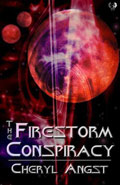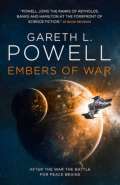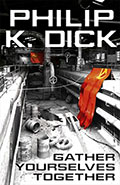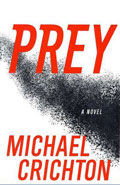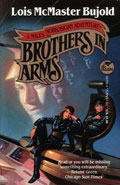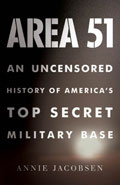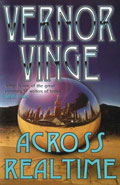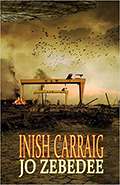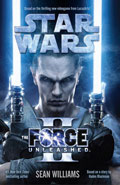City of the Iron Fish
By Simon Ings
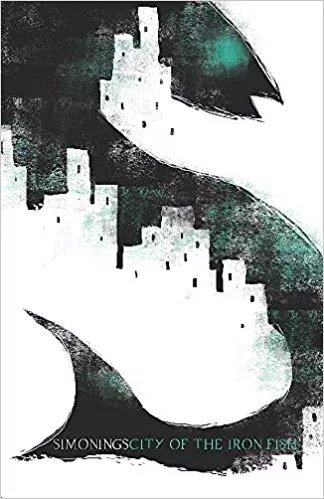
- City of the Iron Fish
-
Author: Simon Ings
-
Publisher: Gollancz
- ISBN: 978-0575130890
- Published: April 2014
- Pages: 288
- Format reviewed: Paperback
- Review date: 11/02/2019
- Language: English
- Age Range: N/A
By the end of the eighteenth century, our world had become fully charted, catalogued, mapped and explored. No longer could it be imagined that beyond some distant horizon there lay a land of extraordinary wonders—a hidden utopia, for example, nestled away somewhere safe from the corrupting influence of our imperfect, real-world societies. Or perhaps a fountain whose waters granted perpetual youth.
Science fiction, of course, finds ways around this, the most obvious tropes being space travel and parallel universes. One way or another, SF upends mundane reality and takes us to strange and foreign lands unconstrained by reality’s limits. But, once every so often, science fiction will seek to draw our attention to those very limits, and when that happens, an unorthodox take on science fiction results.
City of the Iron Fish is just such a novel. The eponymous City is nestled on and between two hills in the middle of a scorching desert, yet its temperate climate, lakes, rivers, and trees are sustained by the magic of a ritual performed once every twenty years, one in which an iron fish is filled with scraps of writing taken from the city’s residents, then hung and immolated at the center of a plaza called the Circus of Birds.
Miraculous a wonder as this magical ritual may be, it has its limits—the City is the entirety of existence. Beyond the City there are suburbs, then villages, then hamlets, and then… nothing. Or, at least, this is what citizens are told. This is what they believe, and fear of the limits of their universe fuels an intense social aversion to the areas outside the city limits.
“Why must we feed the gulls?”
Protagonist Thomas Kemp opens the novel with this boyhood question of his father. Tom is not one to accept what is generally believed to be true, or to align his behavior with arbitrary social strictures. He will go on to search for the City’s secret logic, to test its borders, and to search for a way to access the place known as the “given world,” a full and complete world, one that does not need to be revived every year by a burning fish full of empty words.
Boundaries, Real and Imagined
The world of City of the Iron Fish is quite small. In fact, as Simon discovers, beyond the City in all directions lies a zone of physical reality capable of destroying ontological reality. Human limbs that pass into the field become plastic and wood until drawn back. A drawing, caught on a gust of wind, floats into the field, and its forms devolve from detailed sketch, to stick figures, until the essence of it dissolves entirely into random lines and smudges.
The boundaries of the City are not a metaphor for the physical limitedness of our world, but rather for conceptual limitedness. The most important aspect of life in the City, is that most citizens, unlike Tom and his friend Blythe, have so deeply ingrained the social norms of never leaving the City, that the fact of the world’s limitedness is not thought of. Tom and Blythe, both artists, are contrasted against two other groups of characters—non-artists, who blindly accept the universe as it is, and artists who do accept the City’s limits, knowingly or not. Tom and Blythe both struggle to find ways of transcending the City’s ideological constraints, which means not just creating a new kind of art, but in the logic of their universe, expanding the City’s physical boundaries as well, or at least finding a way to move beyond them without destroying meaning itself.
In stark contrast to the weirdness of iron fish immolation and the Circus of Birds, the details of Tom’s boyhood, adolescence, and adulthood are strikingly mundane. He goes to school, then university; he awakens sexually at the end of a protracted drunken night on the town; he gets romantically involved; the relationship gets complicated.
The novel operates on two levels. One level is extraordinarily “weird” (in the sense of the “new weird” sub-genre of SF)—the fish ritual, the Circus of Birds, the edge of the world. The other level is extraordinarily realist. Tom’s life inside the City is far from fantastic. Some readers of SF might grow weary of the SF elements of the novel “letting up” for protracted sequences of the novel, but the dedicated reader will find many interesting interactions between them.
One such mechanism is the relationship between the urban rural populaces, whose conflict mirrors the artists’ struggle for meaning. Those who venture outside the City are whispered about and never fully welcomed back into the City’s society (although there are ways; Tom and Blythe both manage as much, though each through different means). Those who choose to live permanently outside the City are called gypsies, and when within the City limits, they are socially stigmatized.
Tom can be a frustrating character to follow—as a youth and well into adulthood, his behavior comes off as callous and self-centered. Ings made the smart choice of narrating the novel in the voice of an elder Tom relating the story of his life. Smart, because I doubt I would have been able to take more than five or ten pages of young Tom’s narrative voice. Those character traits are, however, appropriate. Tom is a smart, inquisitive individual who demands to learn the true meaning of things. Confronted with a claustrophobically tiny reality that literally eats meaning at its periphery, his frustration and aloofness are understandable, if somewhat obnoxious.
Aesthetic Tension
Artistic practices feature prominently throughout City of the Iron Fish and serve as the fulcrum for the narrative’s primary conflict. Tom takes a number of “garden paths” in discovering an approach to deriving meaning from his life, each of which is contrasted against other characters who take those same garden paths too far. One is Alastair, his first lover. The other is C.L.S., his professor at university and later his partner.
The novel spans a time of about twenty years, from one fish festival to another. During that time, a kind of political drama plays out within the social fabric of the City, one in which the gypsies and other rural outcasts grow increasingly unhappy with the social order of the City and eventually become violent.
Alastair fights back against the rural outcasts, encouraging a kind of civil uprising against them, one which is hampered by his meager station as an artist, and by the fact that the citizens develop an ennui of their own—they may not like the outcasts, but deep down, they too are weary of the City. C.L.S. succumbs entirely to nihilism, not caring whether the City or the rural outcasts pervail. Blythe rejects both groups and chooses to use her art to imagine and craft something entirely new. Art, she hopes, is the means to breaking through the suppression and rejection of meaning, which in the world of City of the Iron Fish manifests as a limiting effect on physical reality. Tom goes down Alastair’s and C.L.S.’s garden paths before eventually uniting with Blythe. In fact, the novel’s final act literalizes that struggle—Tom must find and join forces with Blythe, who goes missing shortly before the crucial ritual of the fish.
Tom and Blythe’s final position is to reject both the radical transfiguration of the City (Alastair; and the university’s Dr. Binns) and complete annihilation (the encroaching horde of rural thugs). In this way, the numerous instances of artwork, painting, drawing, poetry, and theater are joined to the overall theme of the search for meaning. Art is positioned as the search for the ontological boundaries of things, a struggle to fully know the world and expand the field of the knowable.
Closing Thoughts
I went into City of the Iron Fish knowing that it was written in 1994 and was thus shocked that the novel had such a “new weird” kind of feel. China Miéville would not publish King Rat until 1998, and it would be two more years before Perdido Street Station would fully usher in “new weird” as an SF concept.
And yet, rather than the unflinching and continuous weird of Miéville, Ing gives us a realist “life of an artist” interrupted only briefly by interstitials of weirdness—“Say, remember that time I discovered that meaning breaks down at the edge of the world?”
City of the Iron Fish is about how people respond to imposed constraints. The novel oscillates back and forth, using a kind of realism to showcase that struggle, all the while dropping into the wildly fantastic every time the fact of the constraints needs to be showcased. The novel’s climax pulls no punches in this regard. The prose is both weird and beautiful of a caliber commensurate with Miéville’s best.
While the prose itself is graceful and vivid, some of the novel’s structural elements leave something to be desired. The rape scene stands out as gratuitous and overboard for even Tom’s level of self-absorption. Additionally, the rural brigands, who are intent on overthrowing the City’s political and ontological order, are habitually and casually referred to as “black-garbed women.” No good reason is ever given why all the rural outcasts should all be female. At least Ings chose not for all of those aligned with the City to be men. The mob of disgruntled and deadly-violent rural women is the novel’s weakest element by far.
The novel’s overarching structure, oscillating as it does between literary SF-weird and literary realist is certainly something unique, and it achieves much of what it sets out to, but I can’t say I necessarily agree with its overall thesis. The novel itself, as an artifact of the real world, is proof that ontological boundaries can be expanded, that there is more to life than just going through motions within the constraints of our stage. We are more than the puppets City of the Iron Fish frequently suggests its characters to be.
The world of City of the Iron Fish may be small, but its ideas, ultimately, expand far beyond those boundaries, undeterred by the limitations it imposes upon itself.
Written on 11th February 2019 by Matt Buscemi.

